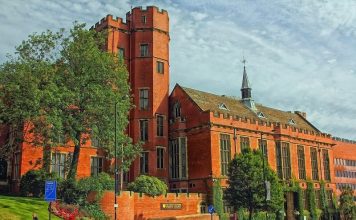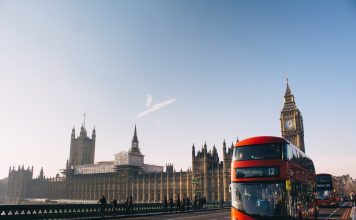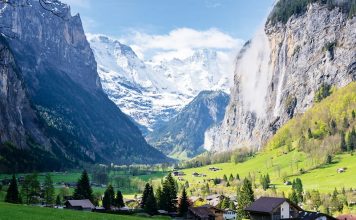Oviedo is a city in the Asturias region of Spain. It is the capital and most populated municipality of the province of Oviedo. Oviedo is famous for its rich historical and cultural heritage, as well as its natural beauty and gastronomy.
What is Oviedo Known For?
Oviedo has over 1,000 years of history, and has been the seat of the Asturian kings, the birthplace of Leopoldo Alas “Clarín” and the place where Woody Allen filmed part of his movie Vicky Cristina Barcelona. Oviedo has a majestic cathedral, a fortified royal palace in the city centre, monumental remains of the pre-Romanesque art, Baroque-style palace houses, unique treasures of the work of Ana María Uría Ríu, emblems of modern architecture and one of the most diverse and vibrant festivals in Spain.
Oviedo is also famous for its location by the Naranco mountain and its tributaries, the Nora and the Nalón, which provide scenic views and recreational opportunities. Oviedo is surrounded by natural parks, such as the Picos de Europa, the Somiedo and the Redes, where visitors can enjoy hiking, biking, fishing and other outdoor activities.
Oviedo is also famous for its cuisine, which reflects its rural past and its geographical diversity. Oviedo offers a variety of dishes, such as fabada asturiana (bean stew with pork), cachopo (fried veal stuffed with ham and cheese), casadielles (walnut pastries) and carbayones (almond cakes). Oviedo is also known for its ciders, especially those from the Nava and Villaviciosa denominations of origin.
Famous Drinks in Oviedo
One of the most famous drinks in Oviedo is the cider, a fermented apple juice that is usually dry and sour. Cider is often served in large bottles or barrels and poured from a height to create bubbles. Cider is typically consumed as an aperitif or with tapas.
Another famous drink in Oviedo is the café bombón, a coffee with condensed milk. Café bombón is usually sweet and creamy, and can be served hot or cold. It is often accompanied by churros (fried dough) or mantecadas (sponge cakes). Café bombón is a popular drink among locals and tourists alike.
Oviedo also has a variety of beers to offer, both local and international. Some of the local breweries are Bayura, Caleya and Ordum, which produce craft beers with different styles and flavours. Some of the international beers that can be found in Oviedo are Guinness, Paulaner and Heineken.
Famous Sports in Oviedo
One of the most popular sports in Oviedo is football (soccer), as in most parts of Spain. The city has several football teams, such as Real Oviedo, which plays in the second division of the Spanish league, and CD Vetusta, which plays in the fourth division. Football fans in Oviedo also support Real Madrid or Barcelona, the two biggest clubs in Spain.
Another sport that has a long tradition in Oviedo is bowling. The city hosts several bowling events throughout the year, such as the Bolos de Cuatreada (Four-pin Bowling), which takes place in July and showcases a typical Asturian game with wooden pins and balls. Bowling is also popular among amateurs, who can play it in parks and clubs.
Oviedo also hosts several other sporting events throughout the year, such as marathons, triathlons, cycling races and golf tournaments. Some of these events are:
- The Media Maratón de Oviedo: A 21-kilometer race that takes place in April along the riverbank and the historic centre.
- The Triatlón de Oviedo: A triathlon that takes place in June and consists of swimming 1.5 km, cycling 40 km and running 10 km.
- The Vuelta Ciclista a Asturias: A cycling race that takes place in May and covers 500 km through various towns and cities.
- The Open de España de Golf: A golf tournament that takes place in September at various golf courses.
Famous Streets in Oviedo
One of the most famous streets in Oviedo is Calle Uría (or Calle Mayor), which connects Plaza de la Escandalera with Plaza de la Independencia. It is a pedestrian street that offers a variety of shops, cafes, restaurants and bars. It is also where some of the main events of the San Mateo Festival take place, such as concerts, parades and fireworks.
Another famous street in Oviedo is Calle Gascona (or Calle de la Sidra), which runs through the old town and forms part of the old city wall. It is a narrow street that has many historical buildings, such as the Church of San Isidoro, the Palace of Valdecarzana and the House of the Llanes. It is also where some of the most traditional cider houses and restaurants are located.
A third famous street in Oviedo is Avenida de Santander, which leads to the entrance of the Monte Naranco, a hill that overlooks the city. It is a wide avenue that has many modern buildings, such as the Auditorium, the Congress Centre and the Museum of Fine Arts. It is also where some of the most exclusive shops and boutiques are situated.
FAQs about Oviedo
- What is the best time to visit Oviedo?
The best time to visit Oviedo depends on your preferences and interests. If you want to enjoy the pleasant weather and avoid the crowds, spring (March-May) and autumn (September-November) are ideal seasons. If you want to experience the festive atmosphere and cultural events, summer (June-August) and winter (December-February) are also good options.
- How to get to Oviedo?
Oviedo is well connected by road, rail and air. You can drive to Oviedo from Madrid (450 km), Santander (180 km) or Gijón (30 km) via highways A-6 or A-66. You can also take a train from Madrid (4 hours), Santander (2 hours) or Gijón (30 minutes) via Renfe or FEVE. You can also fly to Asturias Airport (50 km) or Santander Airport (200 km) and then take a bus or a taxi to Oviedo.
- What are some of the must-see attractions in Oviedo?
Some of the must-see attractions in Oviedo are:
- The Cathedral of San Salvador: A Gothic cathedral that houses the Holy Chamber, a Romanesque chapel that contains relics of the Asturian kings and saints. It also has a tower, a cloister and a museum.
- The Palacio de Santa María del Naranco: A 9th-century palace that was built by King Ramiro I as his residence and later converted into a church. It is one of the best examples of pre-Romanesque art in Spain and has a hall, a porch and a crypt.
- The Museo de Bellas Artes de Asturias: A museum that displays paintings, sculptures and drawings from different periods and styles, ranging from Romanesque to contemporary. It has works by El Greco, Goya, Picasso and Dalí.
- The Campo de San Francisco: A park that covers 9 hectares and has a pond, a fountain, a rose garden and a pavilion. It has various species of trees, flowers and birds.
- The Casa de Woody Allen: A statue that depicts the American filmmaker Woody Allen, who filmed part of his movie Vicky Cristina Barcelona in Oviedo. It is located in Calle Milicias Nacionales and is a tribute to his admiration for the city.
See more Famous Places in Spain:
- What is Seville Famous For?
- What is Cadiz Famous For?
- What is Huelva Famous For?
- What is Caceres Famous For?
- What is Granada Famous For?
- What is Madrid Famous For?
- What is Barcelona Famous For?
- What is Valencia Famous For?
- What is Almeria Famous For?
- What is San Sebastian Famous For?
- What is Santanter Famous For?
- What is Salamanca Famous For?
- What is Oviedo Famous For?
- What is Valladolid Famous For?
- What is Cordoba Famous For?
- What is Alicante Famous For?
- What is Bilbao Famous For?
- What is Palma Famous For?
- What is Murcia Famous For?
- What is Zaragoza Famous For?













